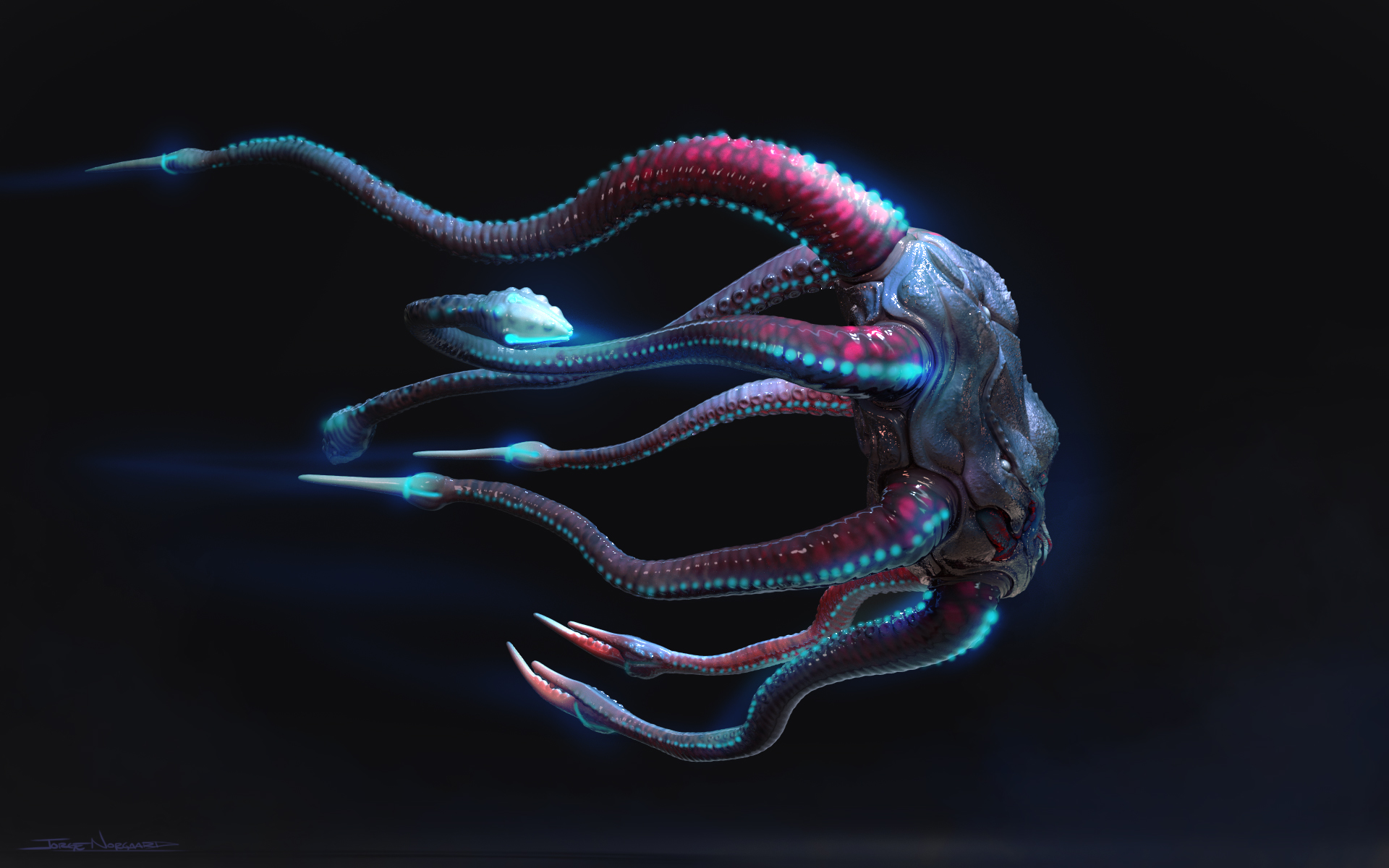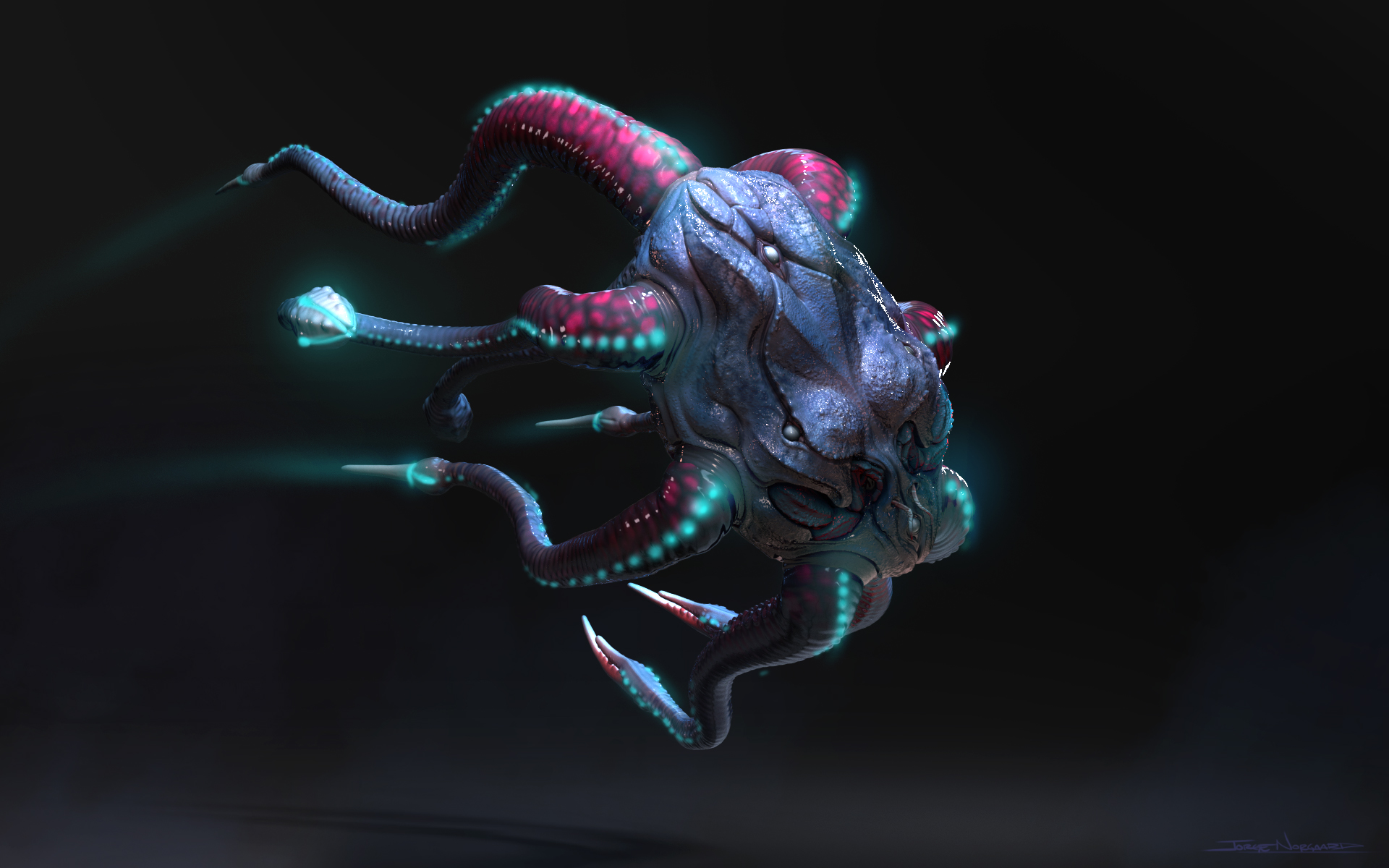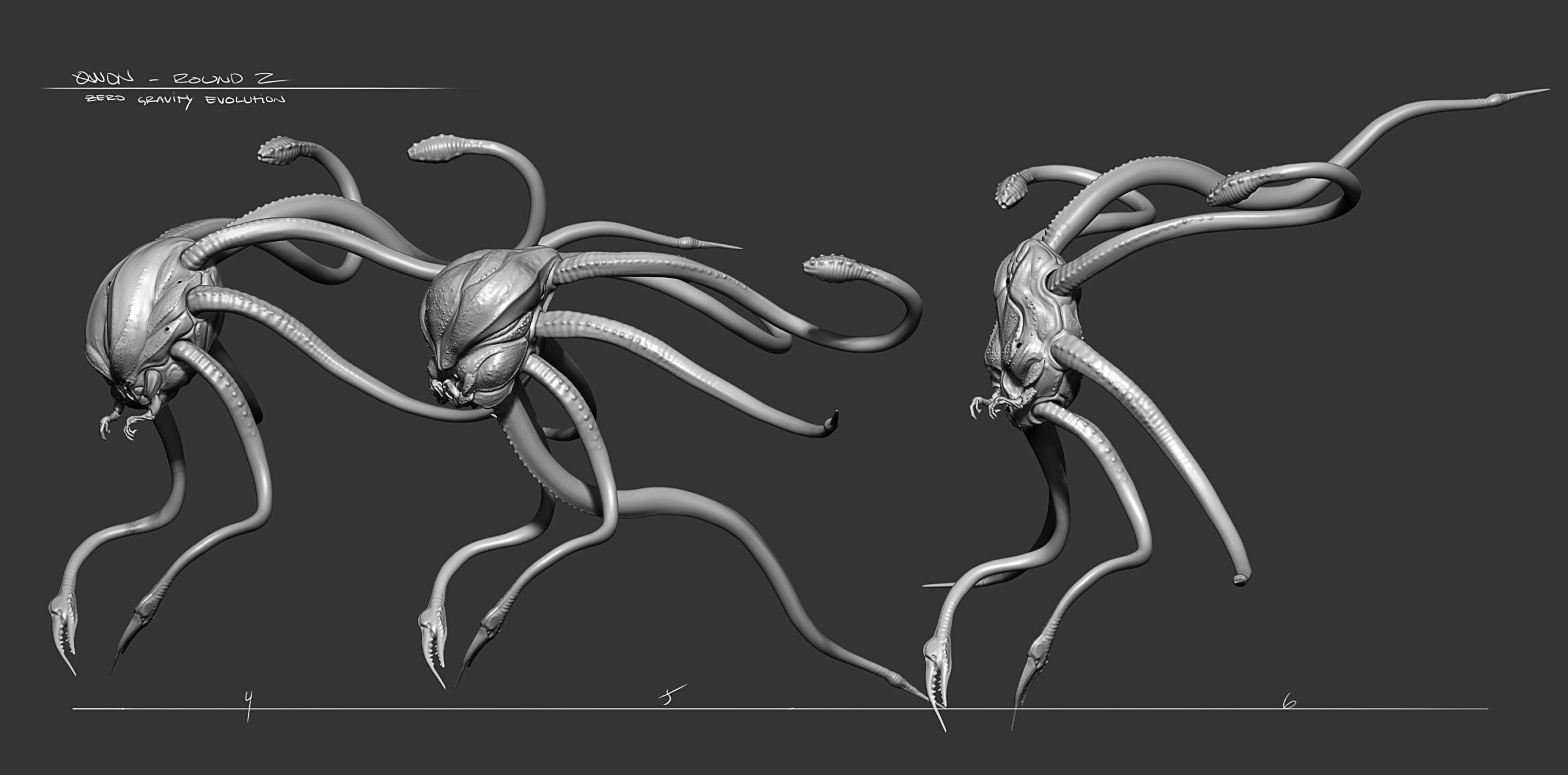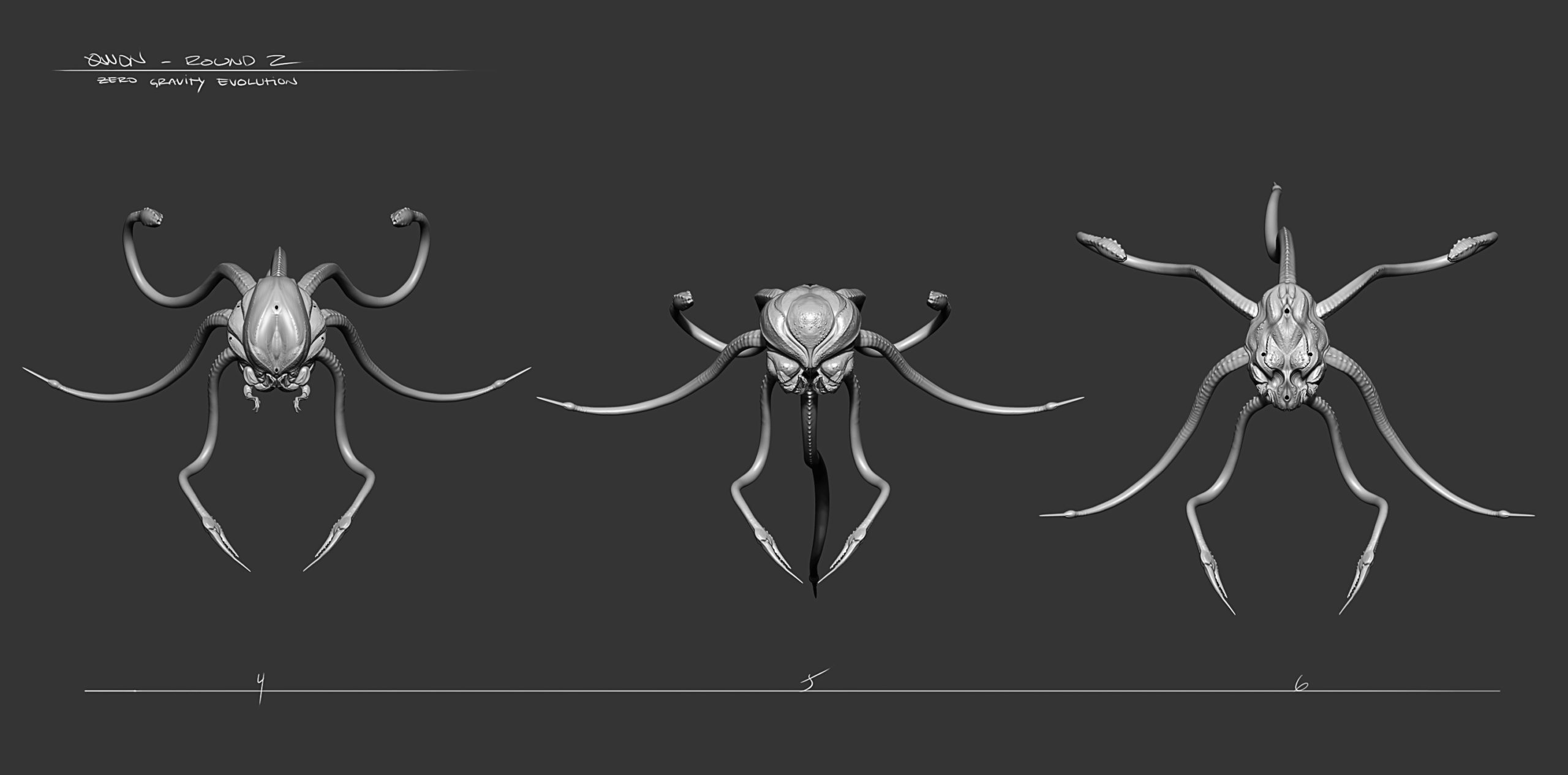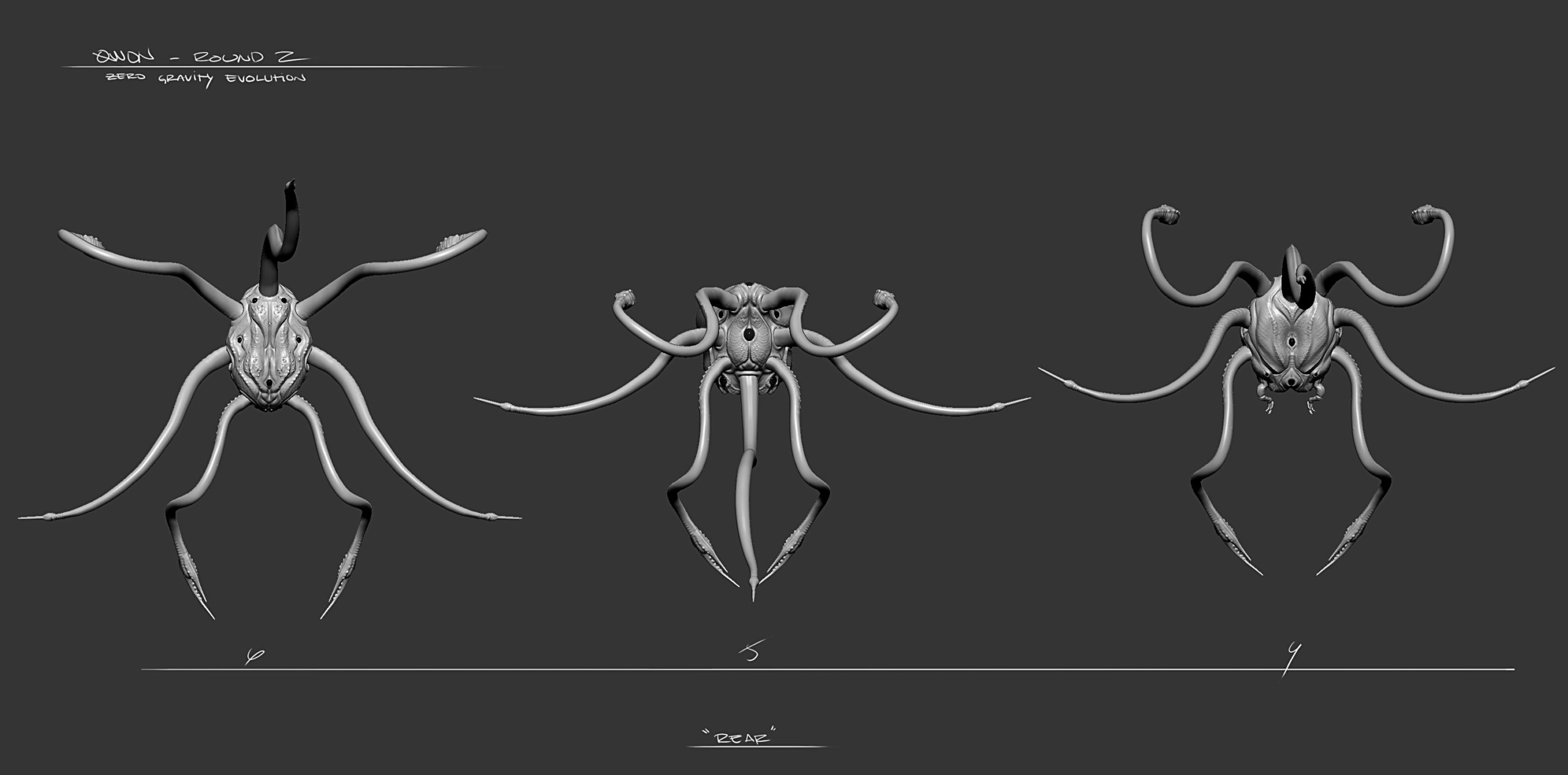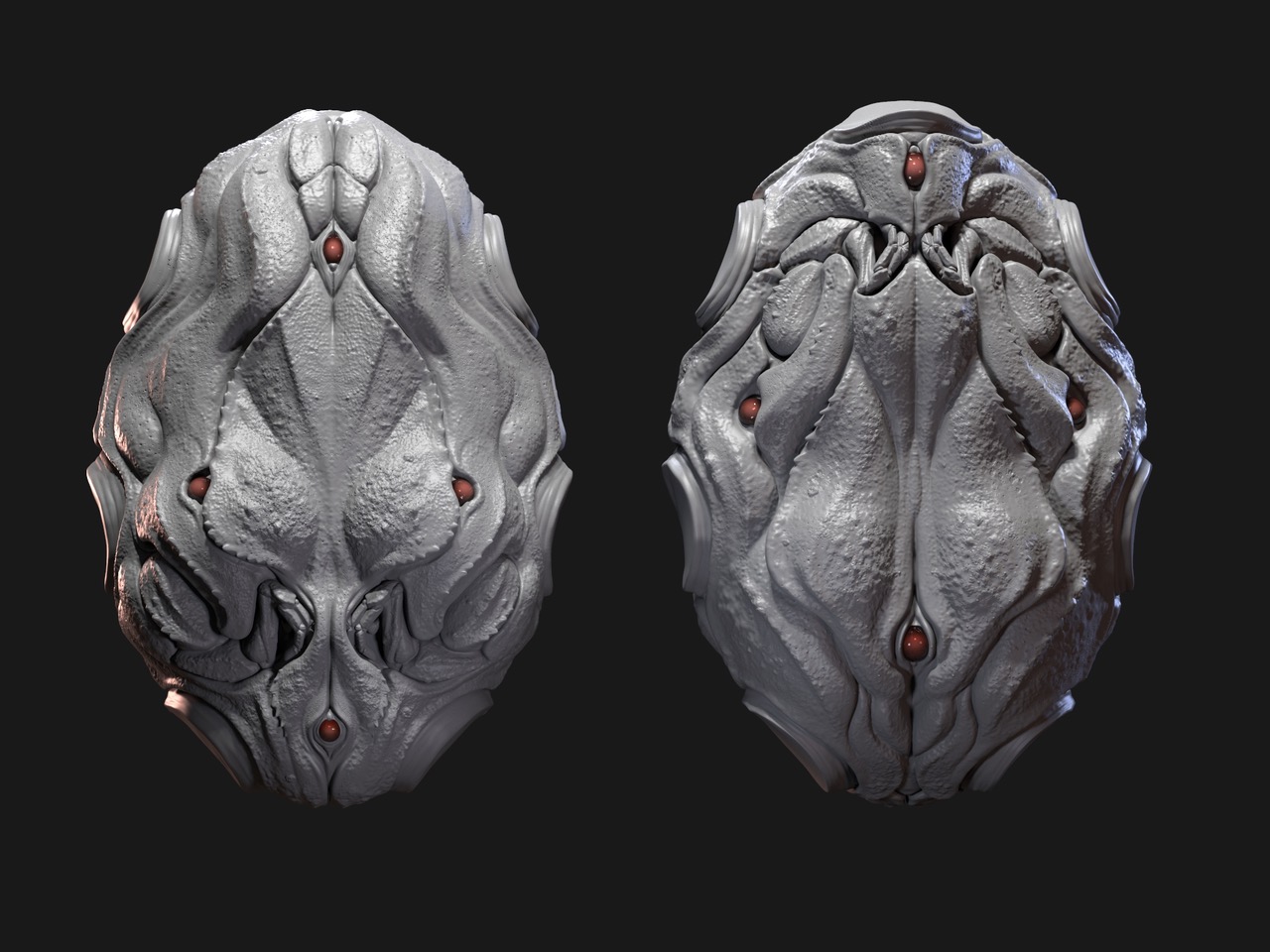Wranaui/Jelly Lifeforms
“…biologically immortal; their genetic-base bodies are always able to revert to an immature form in order to renew their flesh and stave off senescence.” To Sleep in a Sea of Stars
Artwork by Jorge Norgaard, 9B
 About the Species
About the Species 
Humans never imagined meeting a species quite like the Wranaui, the sentient, space-faring race that originated on the planet Pelagius. Researchers were astonished to learn about their highly complex life cycle and their equally complicated hierarchical social structure, dominated by Arms and a ruling form.
Wranaui were naturally an ocean-based species, but through extensive use of artificial bodies, adapted themselves to nearly every possible environment. Aggressive and expansionist, they had little regard for individual rights or safety, given their reliance on replacement bodies. Their scent-based language was exceedingly difficult for humans to translate. Even without technological augmentation, Wranaui were biologically immortal; their genetic-base bodies were able to revert to an immature form in order to renew their flesh and stave off senescence. Some evidence indicated they may have been genetically modified by the Old Ones at some point in their distant past.
Types of Jellies
Crawler
Little is known about this type except that they are smaller than the Pillbug form.
Lobster/Snapper
This type had two rows of double-jointed legs attached to the shiny brown, segmented body, which was the size of a man’s torso. A cluster of yellow-rimmed eyes surrounded its flat, neckless head. Pincers and feelers dangled from a chitinous mouth.
Pillbug
A peculiar Jelly grown to act as a vehicle and mobile artillery transport. The design was possibly based on smaller creatures used as a food source.
Squid
(pictured)
The squid body was a meter-wide ovoid, covered with a keratinous shell, and studded with dozens of knobs, bumps, antennae, and small black eyes. Attached were seven tentacles tipped with cilia and an array of sharp, claw-like pincers. Smaller hard, bony arms that end with hand-like appendages were interspersed among the tentacles. A beak-like maw was located on the underside of the carapace.

Side Front Back Side Carapace


